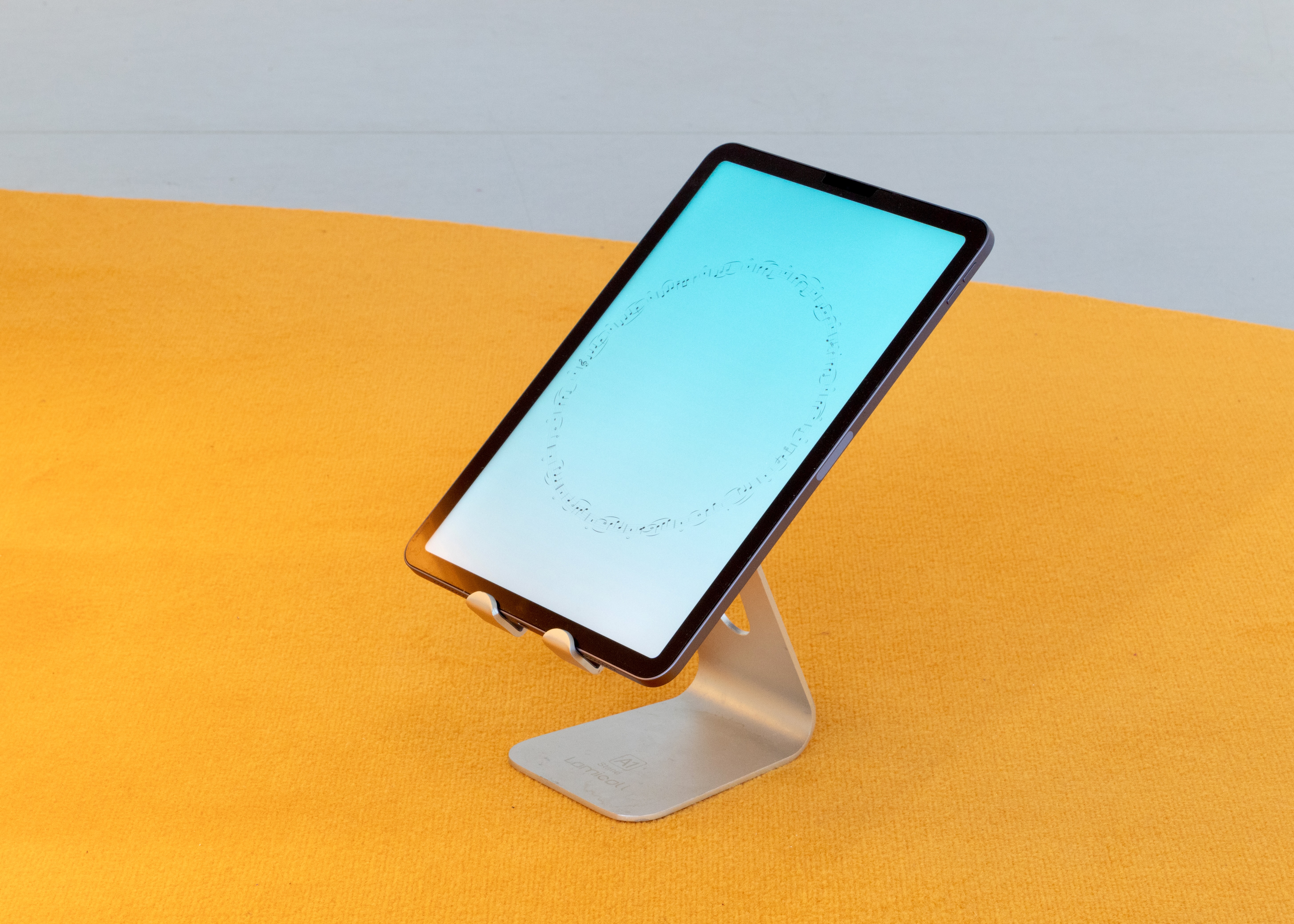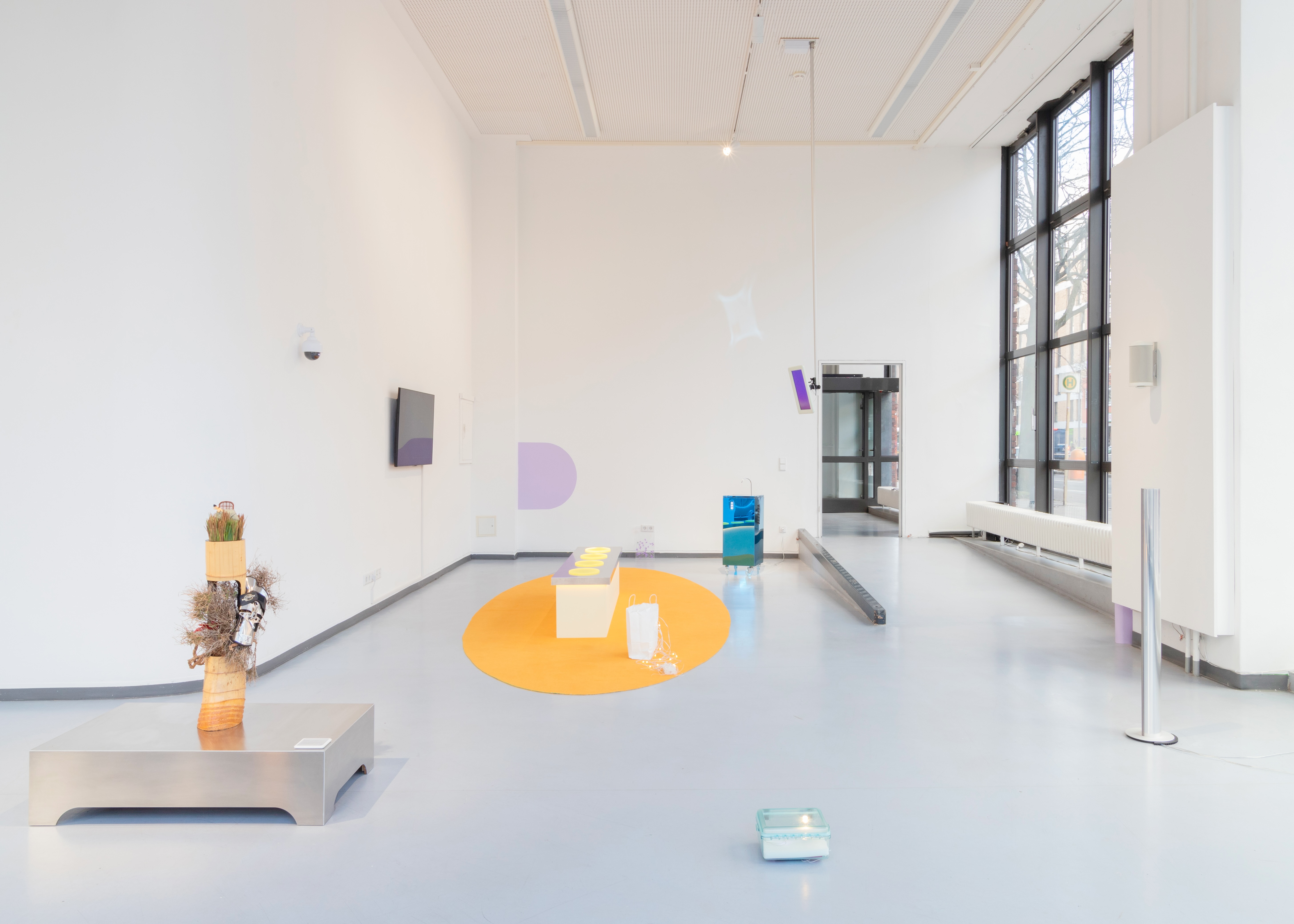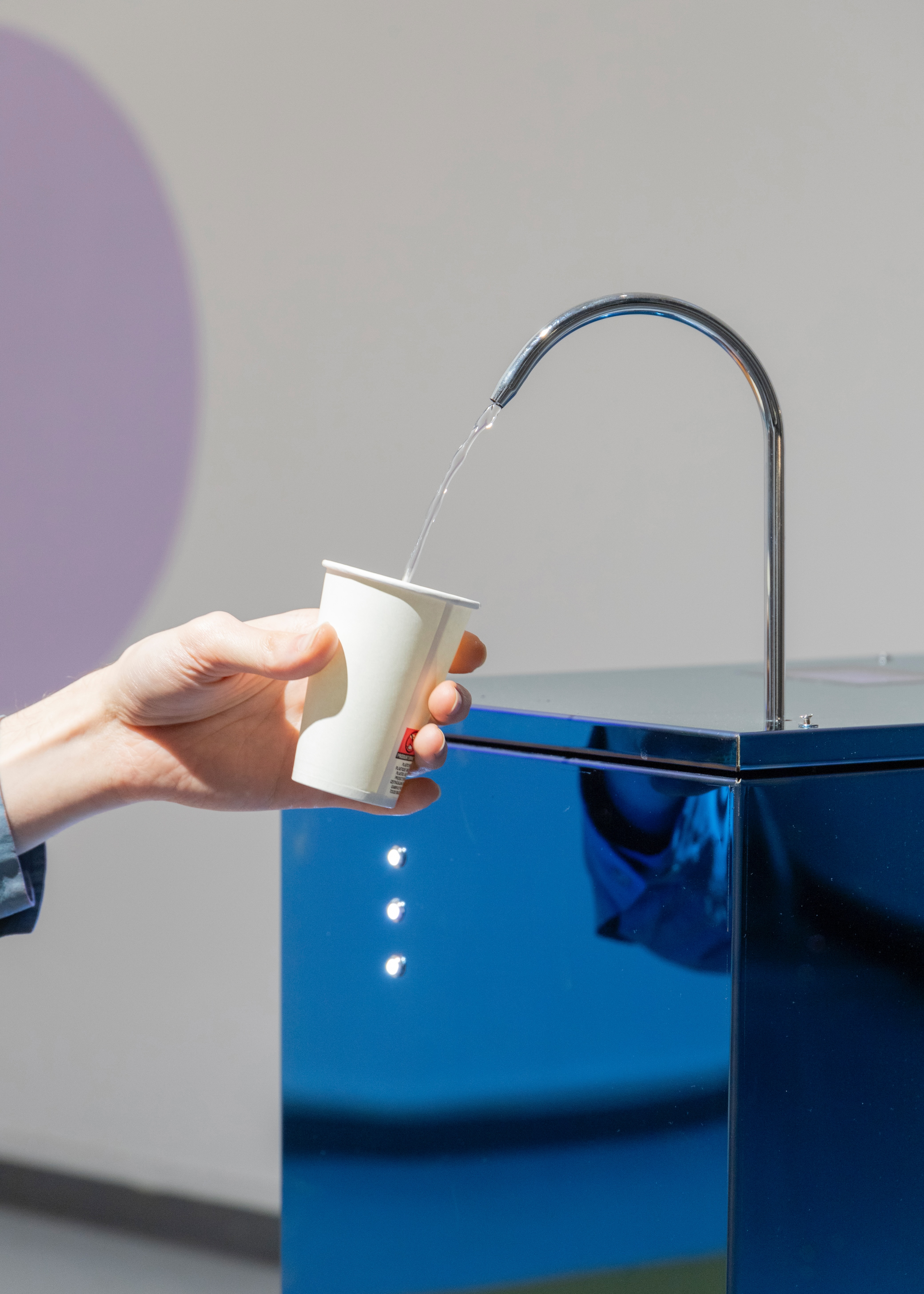Surface, Sublime, Annihilate: A Review of Nile Koetting’s “Polyharmony”
Installation view Photo: Wataru Murakami
I love subconscious information processing. When it barely brushes my logical mind, registering just before attention. I love when it makes me move, like an instinct, like when I find my way through a new software or a new city. I don't want all the confusing stuff a machine is up to or a city is made of; I just want to be the blue dot following the blue line. I just want to get there, liberated from high-load processes.
In December 2023, the blue line led me to Nile Koetting's solo show, Polyharmony, in the street-facing, glass-boxed Galerie Wedding. But the sense of arrival was confusing. It did not exactly feel like an end stop but rather someplace you go to in order to reach another one. Something interfacial, like a lobby or an airport gate.
Surface
The light-filled exhibition, fully visible through the aquarium-like large windows of the gallery, softly glows and pulses. Its bright sleekness sits askew in the unpolished, pragmatic setting of Berlin's Müllerstraße. It seems tailor-made for the ADHD babes: flickering screens, ranging from small monitors to medium-sized display systems are scattered around the gallery. They hang from the ceiling, fixed at various heights on the walls, or rise up from the ground, freestanding. Displaying timetables, loading signs, optimization status, or analytical graphs, the screens share a 2.0 software interface design sleekness – glistening, colorful, iPhone-like. Information gleams through stock screensaver-like gradient backgrounds, occasionally interrupted by a graphical animation – a dose of fun for the data-seeking viewer.
A ceiling-mounted digital display titled Throbber shows, as the name suggests, a loading icon spinning into infinity on a radian background. As I watch the circle spin, I am reminded of a serpent chasing its own tail, not ouroboros just yet, or, as suggested by the artist during a visit, a digital ensō, the Zen Buddhist unfinished circle crafted from a single brushstroke. It holds that meditative discomfort: a symbol imbued with the frustration of technology's failure to deliver seamless, ultra-fast, real-time responses, now detached from its typical function, treated for aesthetic pleasure, invites us into a state of waiting.


The parallel with the ensō, therefore, transcends visuality – both are mind-work, revealing an invitation and resistance to stillness. Considering the throbber and the ensō together reveals another commonality. The drawing of an ensō is a practice of mindfulness, a meditation on the totality of being. It is the standing image for operations of the unseen – for the incomputable stuff of the universe and the mind as one – just like the ubiquitous animated throbber is the standing image for workings of the subsurface – the computable heavy calculation, download, and communication and its gore operations. As such, they are both interfaces, as nexus of interaction and tension between the knowable and the unknowable, the evident and the arcane, the user and the machine – a Flusserian significant surface. And Polyharmony abounds with significant surfaces. Optimization of the yesterday (optional now+), for example, is an infinitely optimizing graphic displayed on a small circular screen encased in a 3D-printed frame, and Information, is a flight information display system. The planes' departures, whose airlines evoke synthetic worlds – recycled beach, non-visible horizon, laminated gaia, tapioca platform – are all canceled. Koetting’s interfaces keep on spitting complex system breakdowns and symbols of digital frustration into satisfying designs with therapeutic effects. Even if the optimization fails to yield transformation, and even if an unknowable event grounds all planes, the interface is so comforting that I just find myself gazing into the screen’s warm liquid crystals, fixating over the colors of the wings of chaos-prompting butterfly, mind unbothered.

Sublimation
Koetting's interfaces stand alongside functional furniture. Two oval, bright orange carpets serve as the stage for portal-like benches, Seat Selections i and ii, their resin seats emitting a soft orange and pink light. These rounded, organic, glowing furniture projects a frozen image of y2k futurity, not the crazy hard sci-fi futurity, but rather the one airport terminals exude, with a touch of Gen-Z LED enthusiasm.

CCTV dream, a faux CCTV camera, is fixed on the wall, serving as a subtle marker of surveillance, placed as if aimed to register peripherally in the minds of visitors. Towering metallic speakers, Atmos, emit an ambient soundscape by Hideki Umezawa, drawing inspiration from train stations, airports, and mobile phone notifications. The ambiance takes shape with the interplay of furniture, light and sounds, one infused with the sensory quality and poetics of market and information capitalism. Polyharmony captures the essence of retail and transportation architectures, seamlessly woven into the web of distribution systems and digital networks. But not the one I know and navigate. Koetting’s rendition is sleek, high-speed, lag-free, and frictionless, existing in the fantasy world of smart cities and ambient computing. It is not the chaotic, cacophonous, and clunky experience of logistics or the excessive, glitchy, cursed experience of digital media, but rather an Apple-like, Zen garden in the machine world of tranquillity and seamlessness.
Koetting distills the moods of capitalism to crystallize the language and visuality used to conceal or communicate its beliefs and untruths. The artist also plays with the duality of atmospheres as chemical and emotional envelopes: while he accelerates emotional landscapes, he also materially touches on the gaseous makeup of the room. Adjacent to one of the benches is Water Generator 水分 kirakira version, a metallic, internet-blue atmospheric water fountain on wheels emitting a clinical blue halo. Collaborating with a start-up, Koetting designed this piece to literally and chemically synthesize the atmosphere, drawing its humidity in to condense it into water.


It is part of an open system devised by the artist that sustains an exhibition nested within his exhibition: Flower stage is a metallic pedestal hosting an ikebana composition by Christian Koun Oldham, renewed every two weeks. In this dry gallery environment, the water fountain has to find moisture where it can. The unsuspecting visitors find themselves transformed into the bottom of a ghastly chain, where they become a spring for the fountain’s extraction of the moisture it lives on, distilling into water to feed the highly engineered micro-garden. Literal and metaphorical growth, disruption, and adaptation: peak startup. The artist's atmospheric interventions, whether chemical or operating at the level of moods share a common trait: they operate through distillation and sublimation. He distills the essence of systems that flourish by dissipating into thin air, leaving behind no traces of their functioning, creating the impression of being naturalized within the environment, and then evaporating them back into a saturated mood. In Koetting's satisfying interfaces point to the veiling of heavy processing and gruesome work that allows technology to exist, and he uses them as ambient markers to craft his own version of a retail architecture atmosphere. The interfaces are atmospheric.

Naturalise
In recent projects, under the consulting agency core name Atmospheric Solutions, Nile Koetting collaborated with fashion designers and curators to cater atmospheres for their shows. Inserting the interventions as ambient interfaces within the existing parameters offered by the commissioner, Koetting's atmospheres functioned as assistants, Alexa-Siri-maxxing. The disembodied interfaces mediate between user/visitor and their environment, announcing a series of events, presenting artworks or designs, or just plainly digressing with the verbal overenthusiasm of familiar AI assistants. As such, Koetting overthrows the threshold nature of interfaces; he vaporizes them, and they become hyper-intuitive, unremarkable, omniscient, and deeply intimate.

There is this recurring motif in science fiction films where screens, such as computer monitors or communication devices, are depicted as translucent, allowing users to see through them while displaying digital content. The development of technology suggested by such tropes of immersion and transparency is one of technology's immanence. As if pushing even further towards the invisuality of technologies, Nile's sublimated interfaces are so vapour-like they become unregistrable. We interact unaware through movements and reactions that are sensed and fed back into the atmospheric machine so it can guide us painlessly. The backend forever disappears, and the foreground is so totally integrated it becomes the smoothest experience of non-choice and tranquillity. Total design, pure operability, decision-free bliss.


Nile Koetting
Born in Kanagawa, 1989. Lives and works in Tokyo and Berlin. Nile Koetting is known for his installations using a variety of media, including video, performance, and sound. His projects explore a new perception of the interchange between material and immaterial, living and non-living beings in a landscape of technological time and space. Koetting's work has been exhibited internationally at Palais de Tokyo, Paris (2020); Centre Pompidou x West Bund Museum, Shanghai (2019); Kunstverein Göttingen (2019); Somerset House, London (2018); 7th Moscow Biennale, Moscow (2017); Kunstverein Hannover, Hannover (2017); Fondation Hermès, Maison Hermès, Tokyo (2016); ZKM, Karlsruhe (2016); Mori Art Museum, Tokyo (2016); Hebbel Am Ufer, Berlin (2016).



